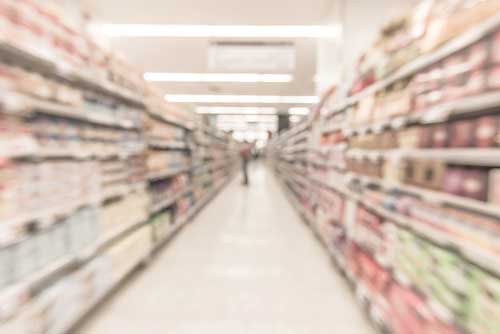Food packaging dates are a confusing mess.
Are they supposed to tell you when the food is unsafe to eat? How fresh it is? Or are they signaling something else entirely?
And some foods don’t have them at all. What does that mean?
You may wonder why there is no standard way to date food like there is for drug expiration dates. But the fact is, aside from infant formulas, the FDA does not require food packaging dates. Its regulations say only that food must be “safe to eat.”
As a result, food manufacturers can do pretty much whatever they want when it comes to label dating.
A Guide to Food Packaging Dates
Dates on packages come with different language. Here’s what the most common ones mean:1
- Sell By. It tells the store how long they should display and sell the food. It is usually found on meats and poultry. Buy the food before this date. If the date has passed, don’t buy it. Cook or freeze poultry within one or two days of the date. For red meat, cook or freeze within three to five days.
- Best If Used By/Before. This is a recommendation for best flavor or quality. If the date expires after you buy it, the food can still be safe to eat. But it likely won’t taste as fresh.
- Use By. Similar to the label above. It’s the last date of the food’s peak quality. It is not a safety date.
- Dates with a series of numbers or letters: Sometimes you see a date along with a jumble of numbers or letters. It is typically found on cans or boxes that contain foods with a long shelf life. The dates have nothing to do with shelf life or quality. They are used by the manufacturer for tracking inventory and in case of recall.
3 Foods Most Likely to Spoil
You want to be careful about three foods in particular when it comes to spoilage. Otherwise, the results can be food poisoning, diarrhea, and a host of other ills.
- Eggs: Look for the U.S. Department of Agriculture (USDA) shield. It tells you that the eggs meet the U.S. grade standards for quality and sanitary processing. There is less chance of salmonella being present.Look for eggs that are labeled grade AA or grade A. They are the freshest and highest quality.2You should also see a three-digit code on the package. It stands for the day of the year that the eggs were packaged for sale. So if you see 001, that means the eggs were packed on January 1. If it says 365, it means they were packed on December 31.3Make sure you buy eggs that are no more than 45 days beyond the date of the code. Within 30 days is best.
Eggs will stay freshest if you put them in the coldest part of your refrigerator. This is often not the egg shelf. Often it is the lower part of the refrigerator.
- BeefSurprisingly, that cherry red color that many of us look for when we buy beef is not a sign of freshness.4When meat is freshly cut, it has a purplish tint. But when it is exposed to oxygen for a period of time, it turns cherry red.Ordinary grocery store packaging allows oxygen to reach the surface of the meat. Meats that are vacuum packed more often have the truer purple color of freshness.
If the meat looks brownish-red, it is not necessarily a sign of spoilage. It means the product may have been exposed to oxygen longer.
And don’t worry if ground beef is red on the surface and purplish/gray inside. Again, oxygen is causing the surface to be red. But it can’t penetrate the interior. So that remains a darker color.
- PoultryDon’t worry if poultry isn’t bright white. Raw poultry can vary from bluish-white to yellow. All these colors are normal.The surest sign of spoilage is a bad odor. Spoiled meat often feels tacky or slimy to the touch. Don’t take chances… Throw out eggs, meat, or poultry if there’s any indication that it might have gone bad.We often recommend pastured eggs and organic, grass-fed meats and poultry. These products are better for you. But if they are not fresh, they are just as prone to spoilage as conventionally raised foods.
One more thing… Make sure you store foods properly. Heat is the enemy of freshness. High temperatures can make even canned food unsafe to eat, even before the “best-by” date.
Like this Article? Forward this article here or Share on Facebook.
References:
1 https://consumer.healthday.com/vitamins-and-nutrition-information-27/food-and-nutrition-news-316/how-to-decipher-those-food-sell-by-dates-735186.html
2 https://www.ams.usda.gov/grades-standards/egg/grade-shields
3 https://www.fsis.usda.gov/wps/wcm/connect/19013cb7-8a4d-474c-8bd7-bda76b9defb3/Food_Product_Dating.pdf?MOD=AJPERES
4 https://www.fsis.usda.gov/wps/wcm/connect/e8dad81f-f7fc-4574-893e-bae20cf8b215/Color_of_Meat_and_Poultry.pdf?MOD=AJPERES

